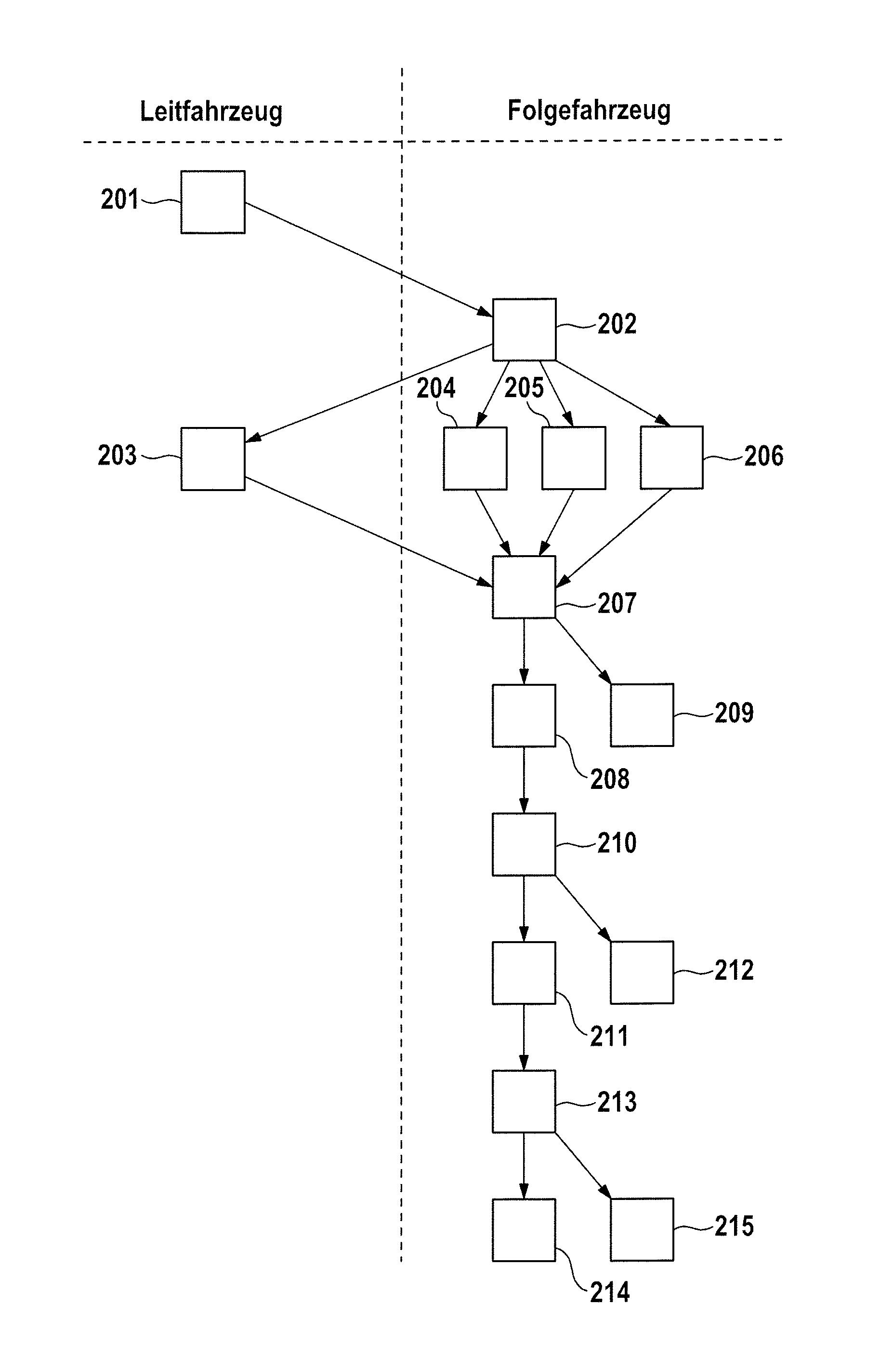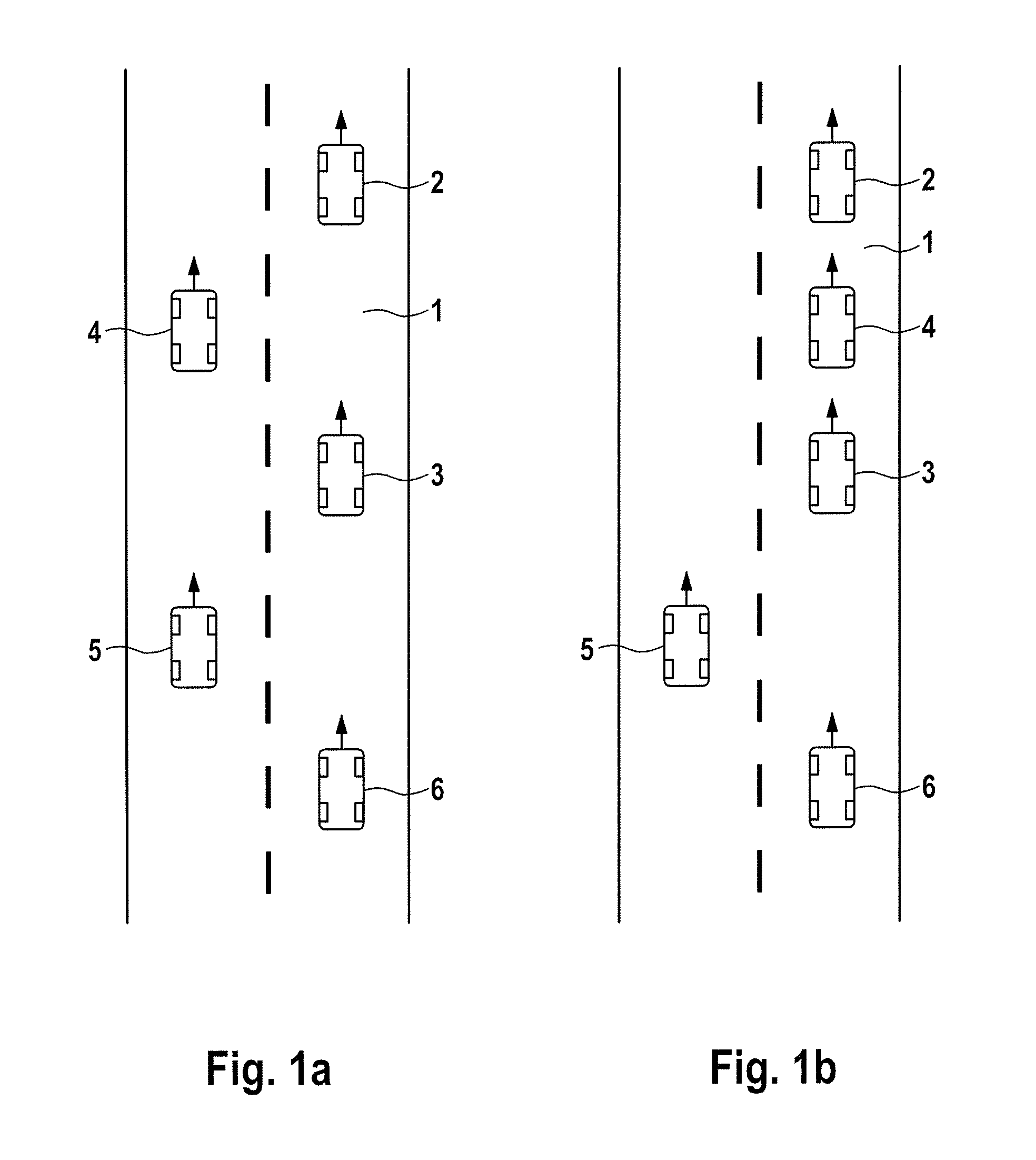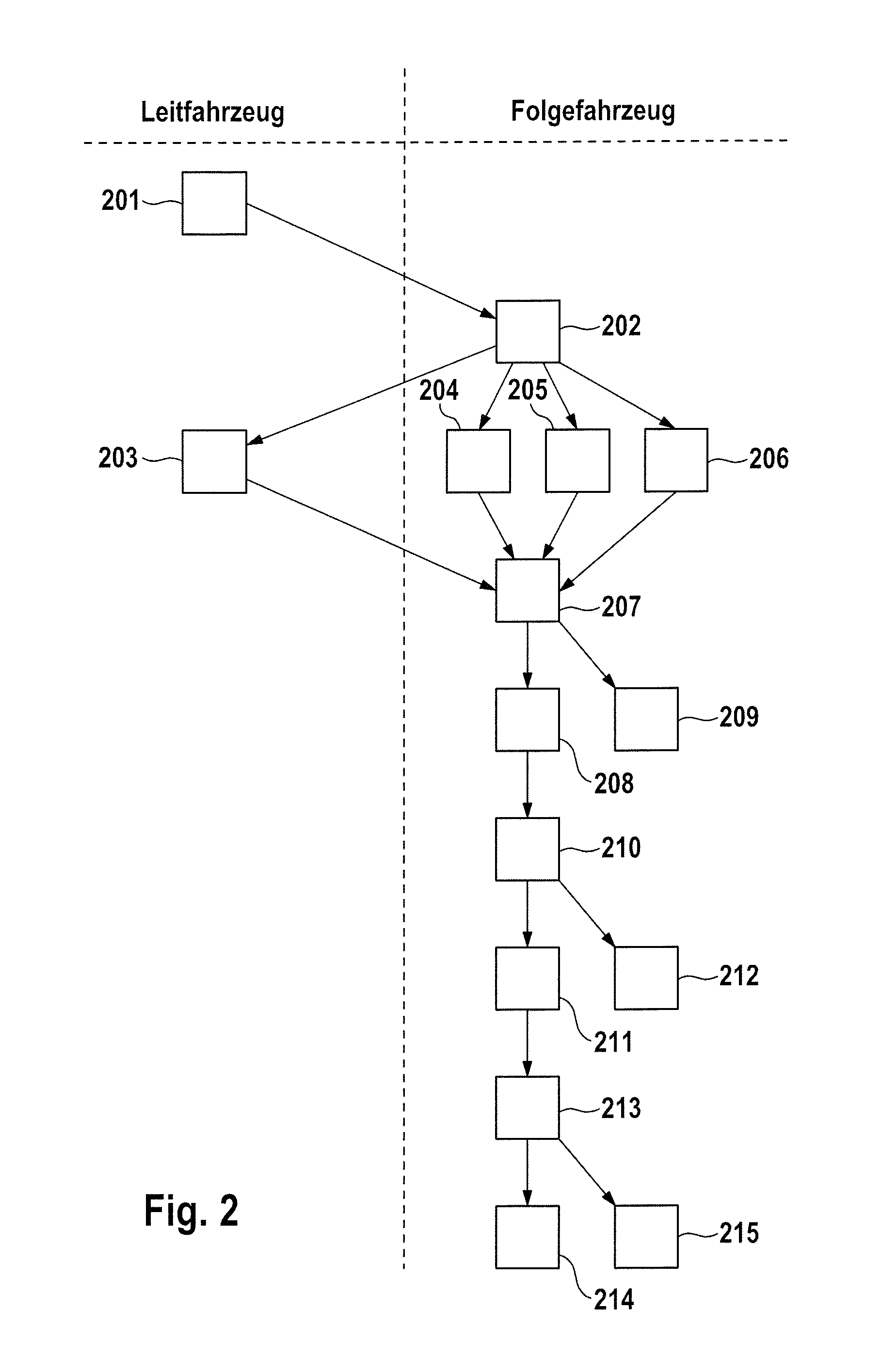Method and system for autonomous tracking of a following vehicle in the lane of a leading vehicle
a technology for following vehicles and leading vehicles, applied in vehicle position/course/altitude control, process and machine control, instruments, etc., can solve the problem that the driver does not wish to provide his vehicle as a leading vehicle, and achieve the effect of increasing the safety of the overall method, and reducing the risk of accidents
- Summary
- Abstract
- Description
- Claims
- Application Information
AI Technical Summary
Benefits of technology
Problems solved by technology
Method used
Image
Examples
Embodiment Construction
[0054]FIG. 1a shows a two-lane road 1 on which vehicles 2, 3, 4, 5 and 6 are traveling. The arrows on the vehicles show the direction of travel. Vehicles 2, 3, 4, 5 and 6 are equipped with the inventive system for carrying out the inventive method. The driver of vehicle 2 decides to offer the vehicles in his surroundings the opportunity to be autonomously tracked to him. To this end, he initiates the sending of a lead message by means of a WLAN communication unit that is existent in the leading vehicle. The lead message comprises a piece of vehicle identification information in the form of a vehicle description (make, type, color and location statement) and also a piece of route information contained in the navigation system of vehicle 2. The lead message is sent at regular intervals of time of 10 s. Vehicles 3, 4, 5 and 6 receive the lead message and use a visual display device to display it to their drivers.
[0055]The driver of vehicle 4 recognizes vehicle 2 as a leading vehicle fr...
PUM
 Login to View More
Login to View More Abstract
Description
Claims
Application Information
 Login to View More
Login to View More - R&D
- Intellectual Property
- Life Sciences
- Materials
- Tech Scout
- Unparalleled Data Quality
- Higher Quality Content
- 60% Fewer Hallucinations
Browse by: Latest US Patents, China's latest patents, Technical Efficacy Thesaurus, Application Domain, Technology Topic, Popular Technical Reports.
© 2025 PatSnap. All rights reserved.Legal|Privacy policy|Modern Slavery Act Transparency Statement|Sitemap|About US| Contact US: help@patsnap.com



